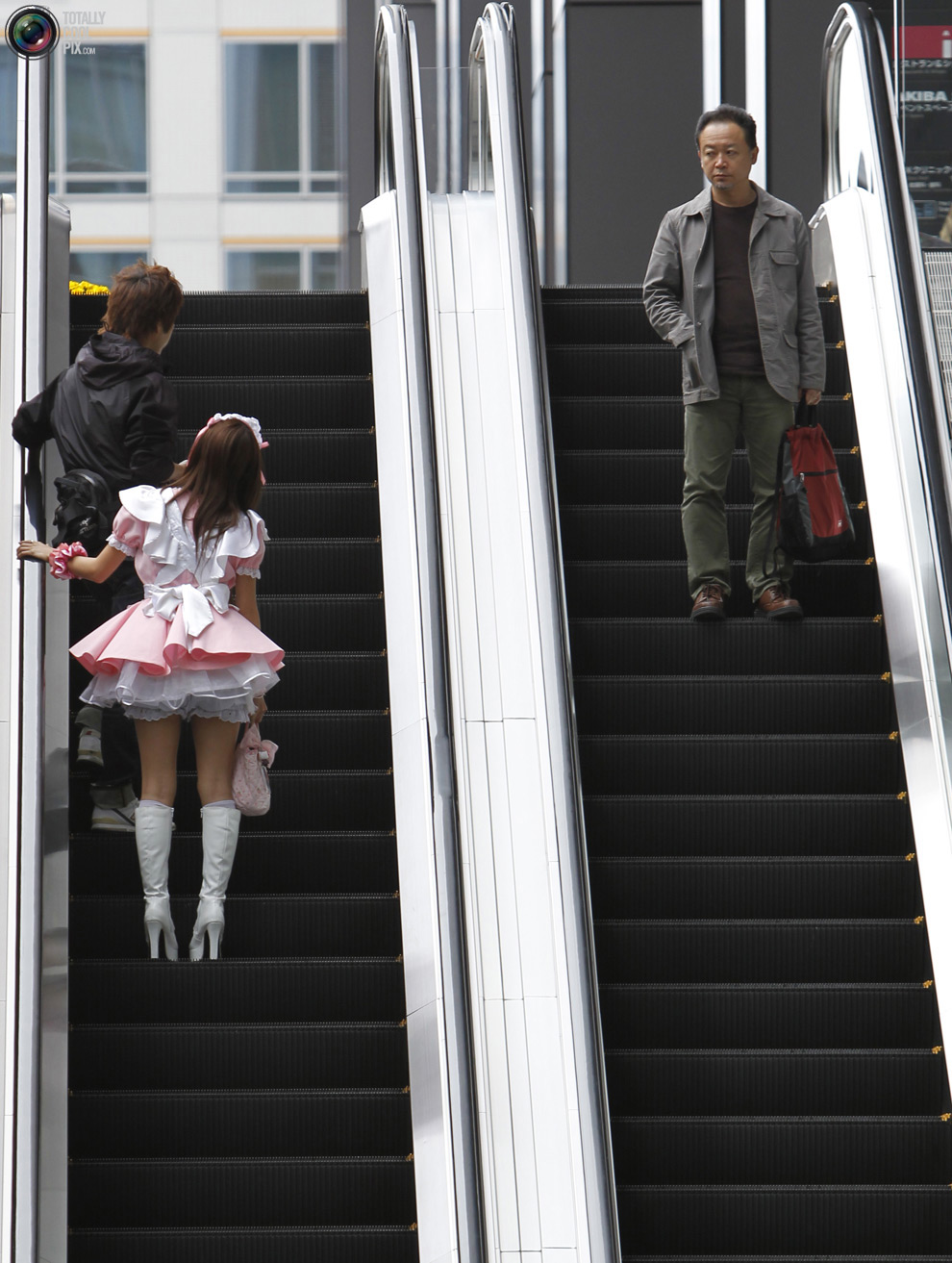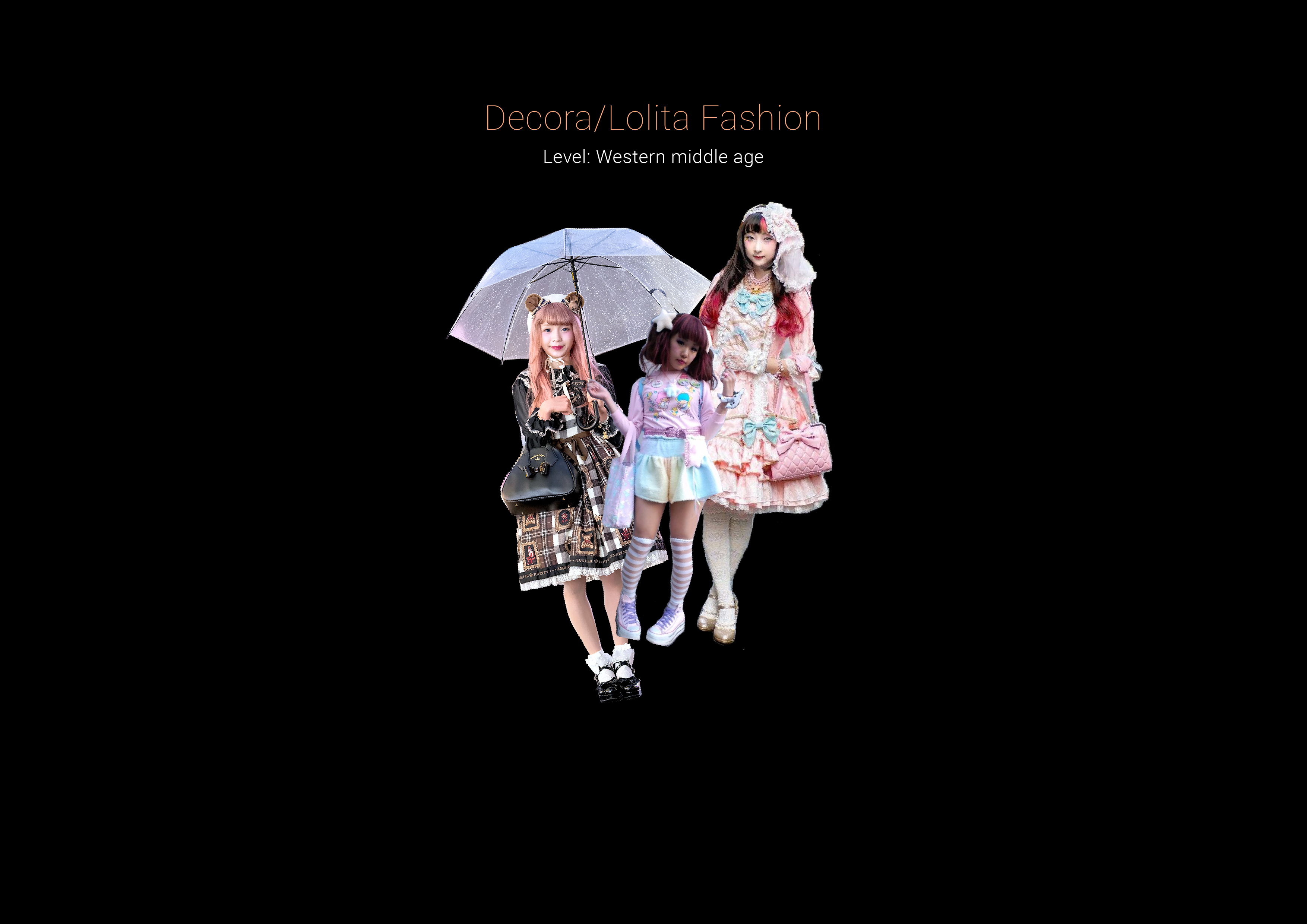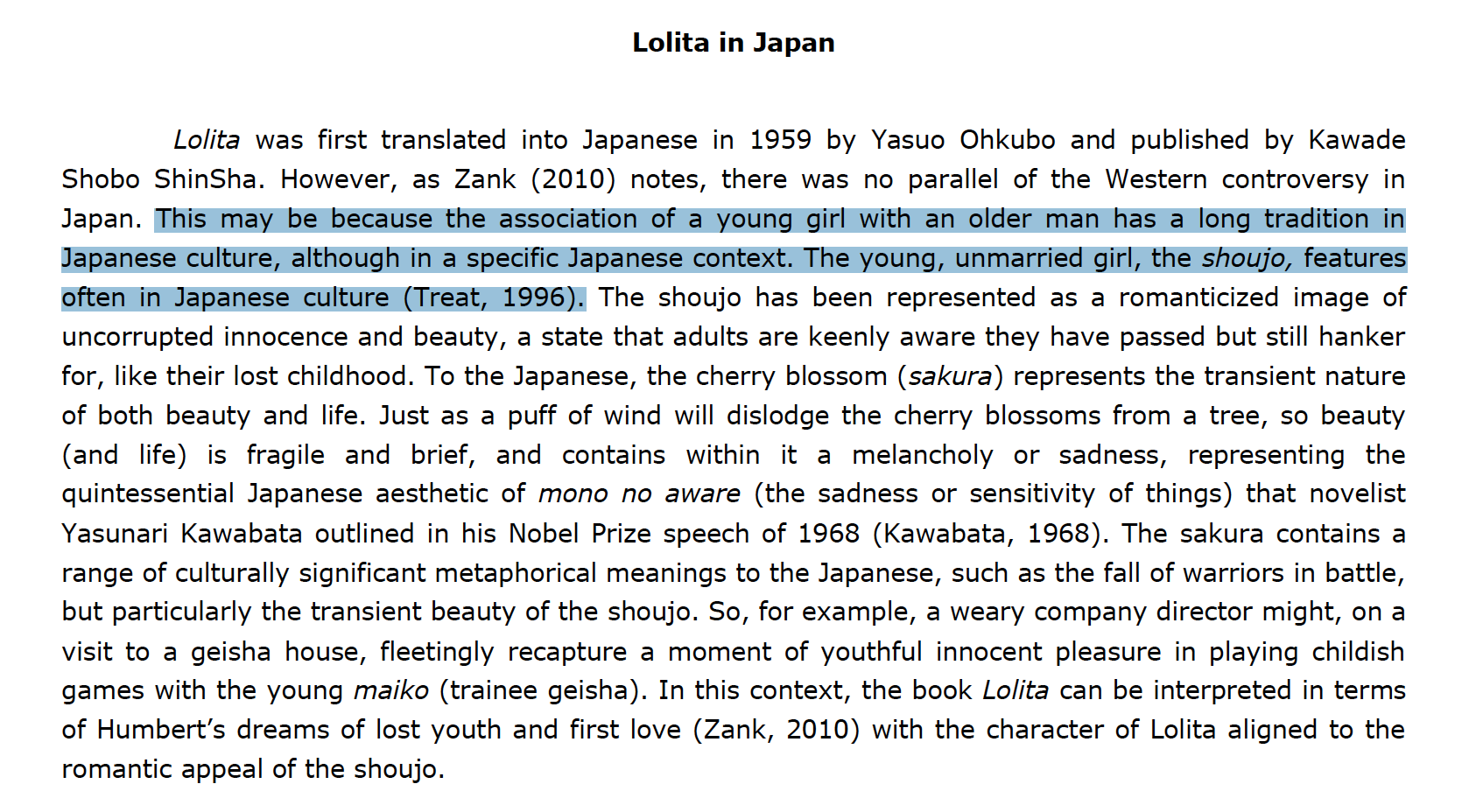GRAPHIC DESIGN 1.3
REPRESENTATION
knolling
type/stereotype
shoes&accessoires
doll
hair accessoires
hair&makeup
Decora is Japanese street fashion that means "Decorate" or "Decorated", it features an extreme amount of generally girly accessories and was typically popular in the later half of the 90's until the mid 2000's. Towards the end of it's popularity in Japan, it was picked up by Lolitas and formed the beginnings of OTT Sweet Lolita.
The primary difference between Decora Lolita (or Decololi) and OTT Sweet Lolita is that, most of the time OTT Sweet Lolita tends to be more thematic and color coordinated. But the terms are often interchangable.
Decora Clothing = Popular colors in Decora clothing are black, dark pink, and light pink. Neons are acceptable. Plain shirts with hoodies can be paired with skirts with a tutu look. Stockings, leg warmers, arm warmers, and knee socks are layered on top of each other. Popular accessories include anything in leopard print and/or dental masks with patterns.
OTT Sweet Lolita is a substyle of Sweet Lolita that focuses on looking as cute/kawaii and decorated as possible, the style itself takes elements from Decora, Fairy Kei, and Himegyaru fashions, such as bouffant hair and exessive accessories. OTT stands for "over the top," and the style is exactly that.
Dresses in OTT Sweet Lolita are typically pastel, often featuring several different pastel colors together. Sometimes they will be sightly shorter than standard Lolita dresses, but not always.
Wigs are a common accessory with OTT Sweet. Generally, long curly wigs, many times in unnatural colours, are the favoured choice. Split, or two tone wigs are also common..
OTT Sweet coordinates often feature more accessories than usual, especially hair accessories.
The term "OTT" can be applied to any sub-style that is over-the-top as well.
OTT Sweet Lolita
type/stereotype
Many have hinted that this style exacerbates a pedophilia natured mindset that runs heavily in the Asian cultures, but if that were so – why do they continue its existence? In Japan specifically, they have coined off the name “Lolita complex” (also known as Lolicon) to describe the attraction to (usually by older males) young, underage girls. This has also been connected to Japanese comics and animated movies where the heroine is stylized and depicted doing erotic mannerisms and implications. Others think of Lolita and remember the book created by Vladimir Nabokov titled “Lolita” which features a middle-aged man who becomes sexually obsessed with a pubescent twelve-year-old girl.
This “complex” actually developed into a moral concern and brought panic when, in 1989 a serial killer named Tsutomu Miyazaki (also known as ‘The Little Girl Murderer”) was discovered to be an eccentric Lolicon and had killed four girls between the ages of four and seven. In the Saitama prefecture where it was formerly known to have had very few crimes involved with children, this blindsided everyone. Soon after, there were calls to regulate all Japanese graphic novels. There have been many arguments as to whether Lolicon escalates the abuse of children, but there is also no evidence to support said claim.
Was Lolita at all affected by the pedophilia natures and crimes that often happen in the Asian cultures? The Asian culture is full of the most obscure fetishes and many believe Lolita encourages males to desire a childlike form and children rather than a healthy relationship between adults. Most average Americans see the Lolita style as being something that should be next to the nurse outfit and fuzzy handcuffs in an adult store. Even on popular shopping sites like eBay and Amazon, things with the implied name of Lolita are of adult fantasy interpretations. Seeing so many Halloween costumes, adult stores, and other media, our American commercialized Lolita leaves many with little knowledge and understanding as to how you may interpret Lolita. After all, if we see it so many times as a form of sexual pleasure and practicality, why isn’t it true? But the Lolita sub-culture would adamantly argue that they find modesty and youthful innocence key elements in the concept of this Asian phenomenon.

Problems with Lolita
LOLITA AND SEXUAL PERVERSION



Some view the sub-culture of Lolita as a form of defiance of current social norms and cultural expectations. Many of Japanese women are still looked down upon and seen as a minority in a man’s world of the workforce. Many are placed in low-level employment areas. Seeking higher education or working toward a career is immediately halted once a woman becomes engaged, married or has children.
Instead that woman’s “career” becomes only focused on their family and keeping the home only. Lolita is a way for them to express their constricted personal points of view. Some see the Lolita style as a form of escape into a fantasy from the reality of their controlled lives; still it leaves some thinking negatively of it as an expression of immaturity. On the other hand, couldn’t you also say that having a “child’s view” on the world would give you a more positive approach at everyday living and bring more overall happiness?
“ ‘Growing up’ always implies having to deal with the pressure of expectations from people older than yourself.”
Cultural differences/History of culture
Why are they mostly in Japan?
Why are they mostly women?